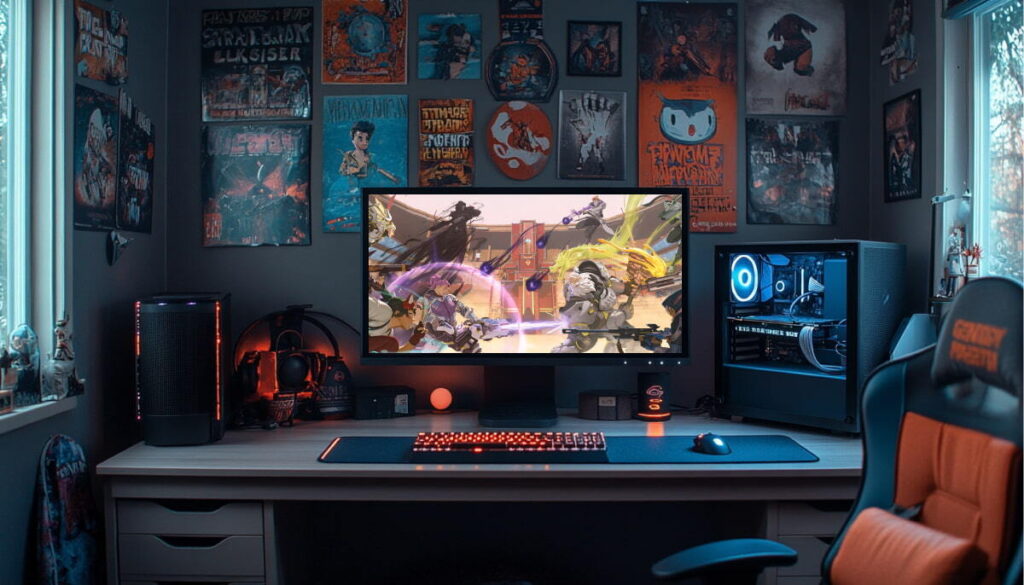
TL;DR
- Overwatch 2 Stadium is Season 16’s flagship mode and has been highly anticipated by the fanbase.
- A third-person perspective has been introduced for this mode, although players can choose to opt back to the default first-person view.
- For tanks, Junker Queen is the strongest hero in Overwatch 2 Stadium Mode, while Reinhardt has been confirmed as the most popular.
- Overwatch 2 Stadium Mode combines ideas from the PvE mode with a fresh PvP experience.
Overwatch 2’s Stadium Mode, launched in Season 16, has quickly become a fan favourite by blending competitive PvP with MOBA-inspired mechanics. After months of hype, players are responding well to the event and are coming back in droves to play the experimental mode.
For hesitant returning veterans or new players, we’ll take a closer look at Stadium and whether it fulfils its intention of offering power fantasy and alternate-class design. Will the success of this mode bring back another golden age of Overwatch, or will Blizzard continue to ignore their past mistakes? Let’s find out.
What is Stadium Mode?
Introduced on April 22, 2025, Overwatch 2’s Stadium is Season 16’s flagship mode, garnering so much hype that it overshadowed Freja’s debut. The competitive, round-based mode introduces MOBA elements to the core Overwatch experience. In this 5v5 mode, teams compete in a best-of-seven series across bite-sized versions of Control, Push, and Clash maps, with the first team to secure four victories winning the match. A mercy rule ends the match early if a team wins the first three rounds.
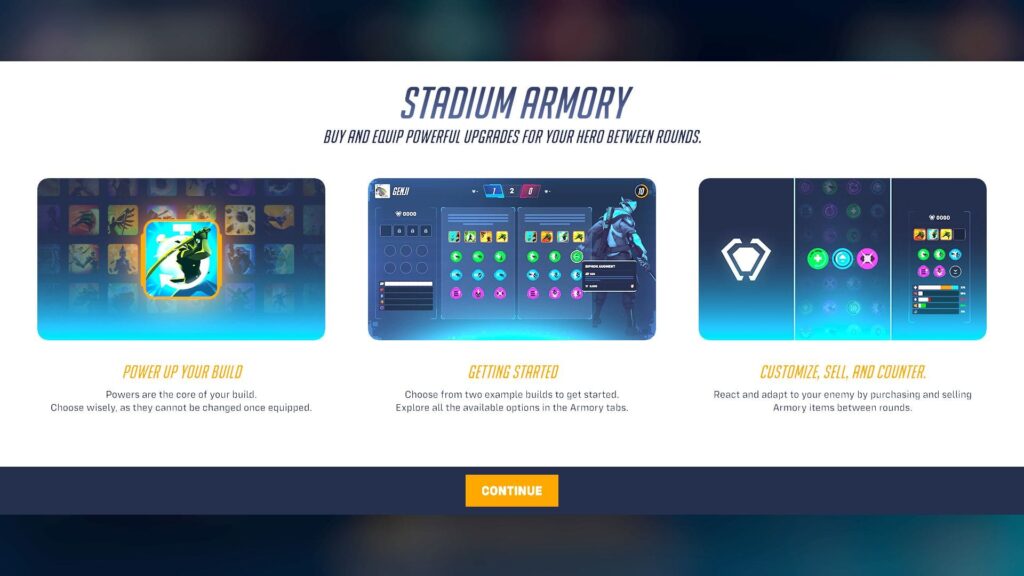
Here’s the big twist: players can buy Items and Powers at the Armory at the start of each round. These enhance or alter their hero’s abilities, ranging from simple stat upgrades like more attack speed or transforming abilities, such as turning Mei’s Cryo Freeze into a rolling ice boulder or Reinhardt flying during Charge, which is terrifying to witness up close.
Players have to earn Stadium Cash through eliminations, dealing damage, healing, and completing rounds. There are also bonuses for being the round’s MVP or taking down enemies who are performing well through a Bounty system.
The Overwatch team introduces a third-person perspective to keep up with the chaos, although players can choose to opt back to the default first-person view. Finally, Stadium mode features its own ranked system with seven leagues ranging from Rookie to Legend, with each role having its own rank. These are separate from traditional Competitive Play and reset each season.
At launch, 17 heroes were available, with plans to expand the roster in future updates. Judging by the community reception and developer interviews, Stadium has been a massive success and could be Overwatch 2’s best update since its inception.
Early meta builds
For tanks, Junker Queen is the strongest hero in Overwatch 2 Stadium Mode. She doesn’t hit the ground running compared to other tanks, but she will start to dominate the server with a few key items and powers. She takes full advantage of stacking Ability Power to gain extra healing on her kit, and keeps her whole team healthy with resetting Commanding Shout on eliminations.
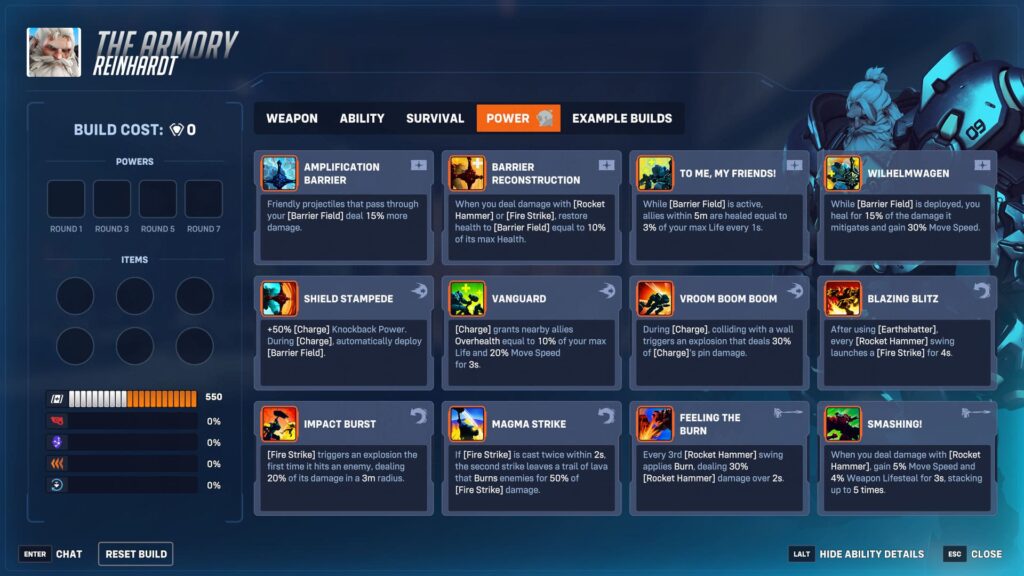
Reinhardt fully embodies the Stadium’s intention with peak-class fantasy. His powers synergise to highlight different parts of his kit, making him a highly replayable character. Some synergies make him a protector by enhancing shield, others a sniper with Fire Strike, or a raid boss by focusing on brawling. A lot of thought and love have been poured into Reinhardt, and the developers even confirmed that he’s the most popular choice for tanks.
For damage, Soldier: 76 stands out as the best in his class without contest. Soldier’s simplicity makes him straightforward to build by stacking weapon power and attack speed. His Power lets him use the aim-locking Visor after a Helix Rocket scales extremely well, making it downright unfair for other heroes to play against.
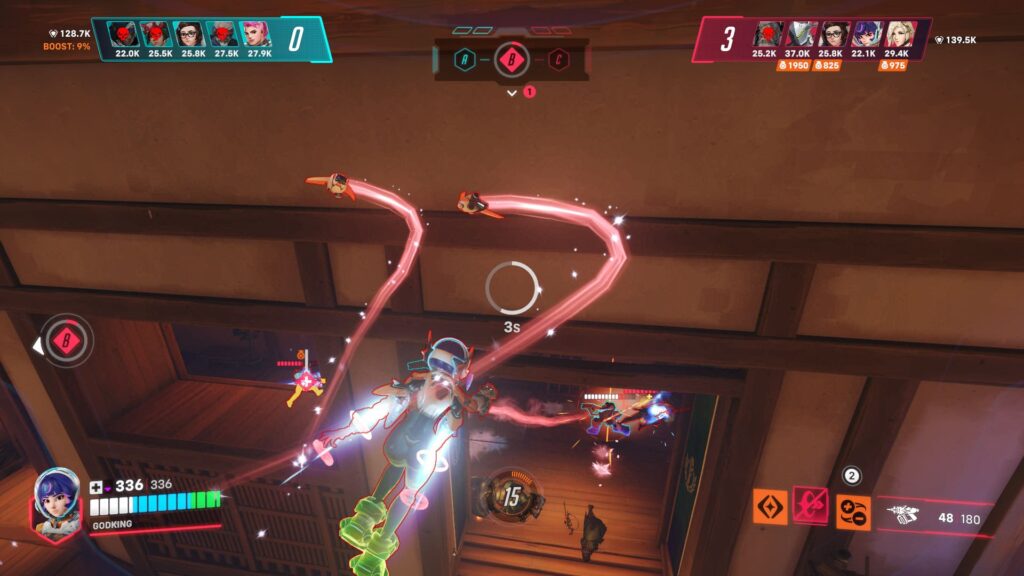
For support, Juno is highly favoured for her absurd damage as a backline healer. Players will heavily build into Pulsar Torpedo to activate multiple effects at once. Slap on more Ability Power and Cooldown Reduction, and players will barely need to fire their guns.
While these heroes are the cream of the crop, most heroes have fun and powerful builds in Stadium. Zarya feels like she has unlimited bubbles and hits like a truck; Mei is obnoxious by throwing Blizzards everywhere and walling the point; Kiriko cleanses for days with Suzu and deploys shadow clones. Extreme outliers like machine gun right-clicking Cassidy were nerfed quickly, yet they’re slow to tune heroes who need help, like D.Va and Ashe.
The meta right now is experimental, where players are still learning how to build their characters. But once players become more familiar with the shop, they’ll learn how to counter the enemy team, too. For example, tanks that are constantly denied by Lucio’s boops can slot in knockback resistance to stand their ground.
Lastly, the community will eventually stop treating the game mode like core Overwatch and recognise its MOBA elements. Some heroes can scale way better than the rest of the cast, staging a comeback in later rounds. Players should look at long-term goals in the match instead of folding to a few-round losses.
Overwatch Stadium Mode review
Overwatch 2’s Stadium Mode takes ideas from the long-forgotten PvE mode and turns it into a refreshing PvP experience. The new, passionate Overwatch team gave players a sandbox to explore the power fantasy of their hero and bring them to new heights. Customising heroes fits perfectly into Overwatch 2’s hero shooter gameplay, leaning more toward hero and less toward the shooter.
Now, here’s the main issue: it’s a competitive game mode. Releasing Stadium as a competitive playlist means that players will optimise out the fun as they climb the ranks. Experimental, suboptimal playstyles will get stomped out by cookie-cutter, flavour-of-the-month builds. Attempting to balance an inherently imbalanced game mode defeats the original intention and alienates the target audience of casual players.
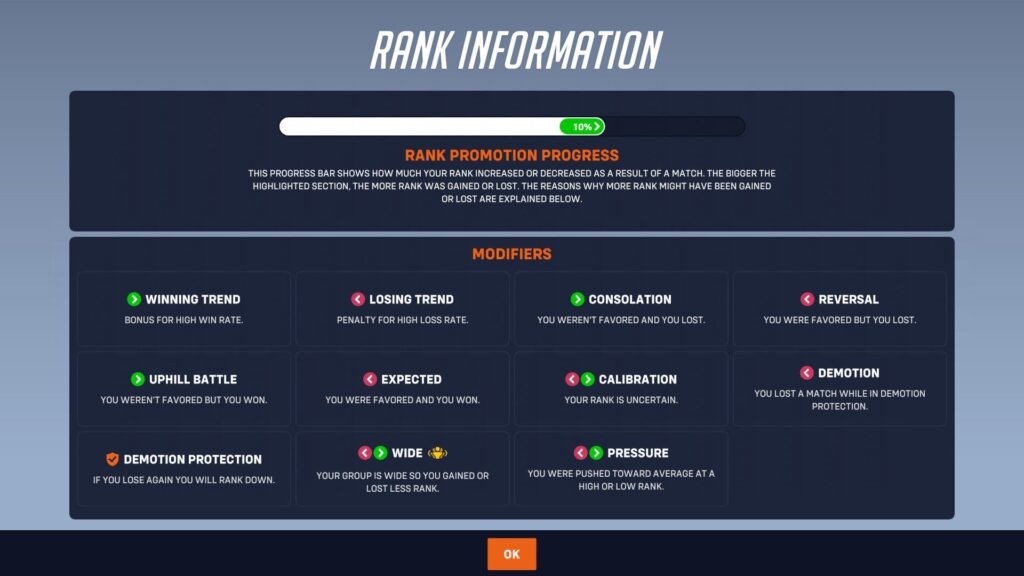
Stadium Mode is in its infancy, yet metas are starting to solidify. The community, content creators, and theorycrafters have started mapping out optimal build paths for each hero; effective builds with a low skill floor but high value. The experimental, fun phase is nearly over, and these strong builds will eventually trickle down to the general player base.
Players attempting off-meta builds will be lucky to even finish their core item synergies with how Stadium economy works and how it incentivises snowballs. Sure, there are systems in place to soften the blow for the losing team, but it’s not enough to stop the winning team from getting their items and powers faster to win each round. Earning currency is the most inconsistent aspect of Overwatch 2’s Stadium, where other heroes are starved for it despite doing their job.
Rounds are short, yet matches are long due to their format and lengthy 90-second buy time at the start of each round. Leavers, and the lax punishment for it, feel much worse in this mode compared to ranked games because of the length. Matches are often one-sided stomps, yet both teams are stuck in the game until they finish the needed rounds. Other issues like the horrible optimization and lack of crossplay, hurt the mode.
These complaints are primarily due to the release of this experimental mode as a competitive playlist. A shorter, casual version of Stadium with a tuned economy will allow players to enjoy the mode for its intended purpose, while letting more competitive-minded players fine-tune their build in a separate ranked mode.
Conclusion
Overall, Overwatch 2’s Stadium Mode was a needed step towards reclaiming its glory years, where players are loud and proud of the game, instead of hiding it away like a dark secret. It’s a refreshing take on Overwatch’s classic gameplay that offers a MOBA-lite experience that could be its own game.
Issues like nerfing fun builds and balancing for competitive players could hurt the experimental identity of the mode. Blizzard has started to regain trust with this major update and all the healthy changes in Season 16. It’s no surprise that many players would prefer this mode over the core experience moving forward.
FAQs
Overwatch 2 Stadium is a new game mode with customisable hero-altering items and power-ups that enhance every character.
The Overwatch 2 Stadium release date was April 22, 2025, in Season 16, launching with 17 playable heroes.
References
The post Overwatch 2 Stadium review: Return to form, or all hype? appeared first on Esports Insider.








